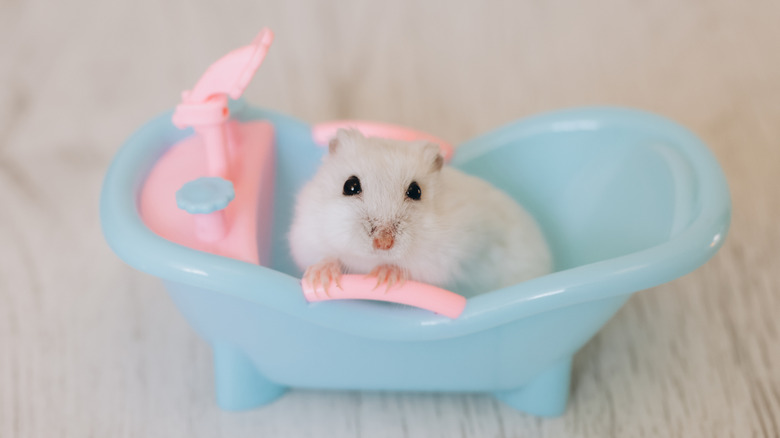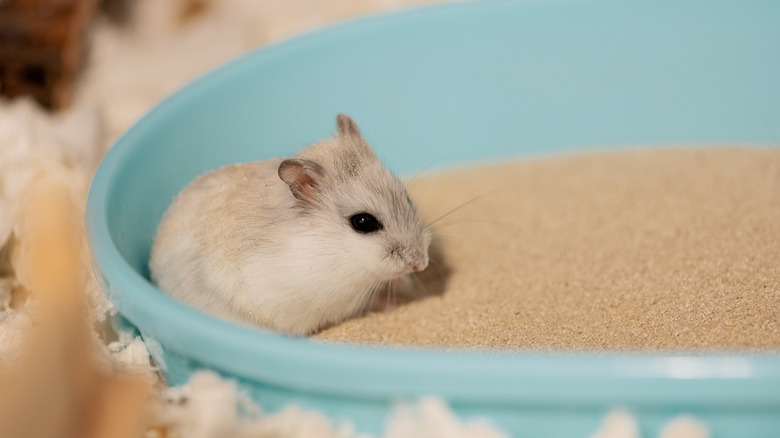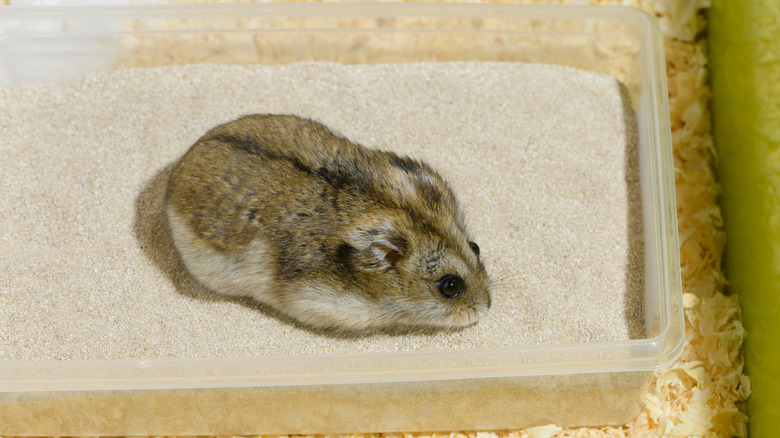Do You Need To Bathe Your Pet Hamster? What To Know
We may receive a commission on purchases made from links.
Hamster owners may notice that their pets are adept at keeping clean by grooming themselves throughout the day. This rubbing of fur with their hands and mouth spreads protective and healthy oils across their skin. Even if your hamster likes you, actions like picking it up or petting it may cause the tiny fluffball to start grooming in order to replace any oils absorbed from its owner.
A hamster's self-care routine highlights its unique need for cleanliness. Because of the oils necessary for healthy hamster coats, owners should avoid a water bath unless advised by a veterinarian. Instead, a sand bath will allow hamsters a fun and enriching way to clean themselves. Rolling around in a sand bath will enable a hamster to decrease excess oils and dirt that may have built up in its coat and can also help deter various parasites. A sand bath can aid in the prevention of hamster mites, ear mites, pinworms, and tapeworms. Sand baths further manage unwanted odors while brightening an owner's day as they watch their little cutie roll around and dig.
How to make a sand bath for your hamster
If you want to let your hamster bathe in style, there are a few options, including the spacious and eye-catching Quxddy Sand Bath and the Bucatstate Hamster Sand Bath. Or thrifty owners can also use everyday household items that are easy to clean and remove after playtime. However, it's best to avoid using shoe boxes because of the mess of leaking sand or wooden crates due to their ability to absorb smell. Instead, try using Pyrex, glass, or acrylic containers for easy cleaning afterward.
Hamster parents have several choices for sand. Niteangel Hamster Desert Bath Sand and other fine sands are great to use. You can also try out your own DIY option. Children's play sand can work, but there are some steps needed to make it safe. Bake and dry at 400 degrees Fahrenheit to disinfect it, and use a sieve to filter any heavy grains. It's best to avoid calcium sand since it can clump and become hazardous, and skip using a chinchilla-specific dust base because it's too fine for hamsters.
How to introduce a hamster to a sand bath
While a typical sand bath should last 10 to 15 minutes, pet parents should remove the sand after their hamster finishes using it to prevent eye or respiratory irritation. If an owner decides to make a sand bath a permanent fixture in the cage, it's best to keep it in a low-traffic area and clean it regularly to avoid waste build-up. To make the sand bath even more comfy, add familiar hiding spots from your hamster's home cage to make the little fluff feel safe in their space, or use objects like a mason jar or a ceramic pot as refuges.
A sand bath is an ideal way to help keep your hamster clean, but the little cutie may not understand how to use it. Luckily, there are some steps you can take to acclimate a hamster to a sand bath. This process includes early introduction at a young age as well as finding a proper space to place it. Next, show them how to use the bath by sprinkling some of their regular sand in their cage to help them realize they're okay to play and burrow in it.
Patience is also key: Simple alterations like changing container or sand type can make a difference, and not all hamsters will pick up on it immediately. Over time, your little fuzzball will likely figure it out, and thank you by giving you a delightful display of bathtime fun.


